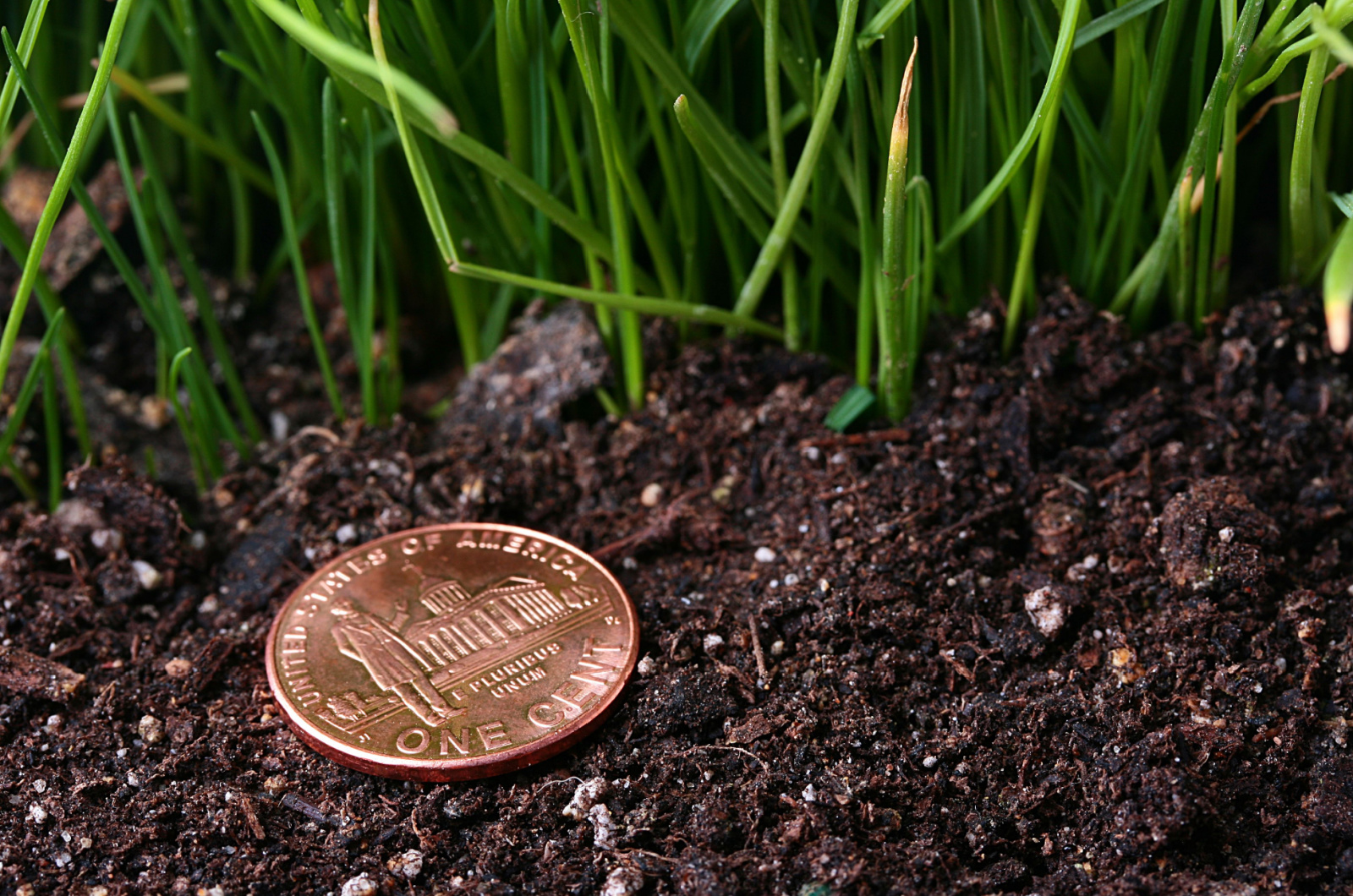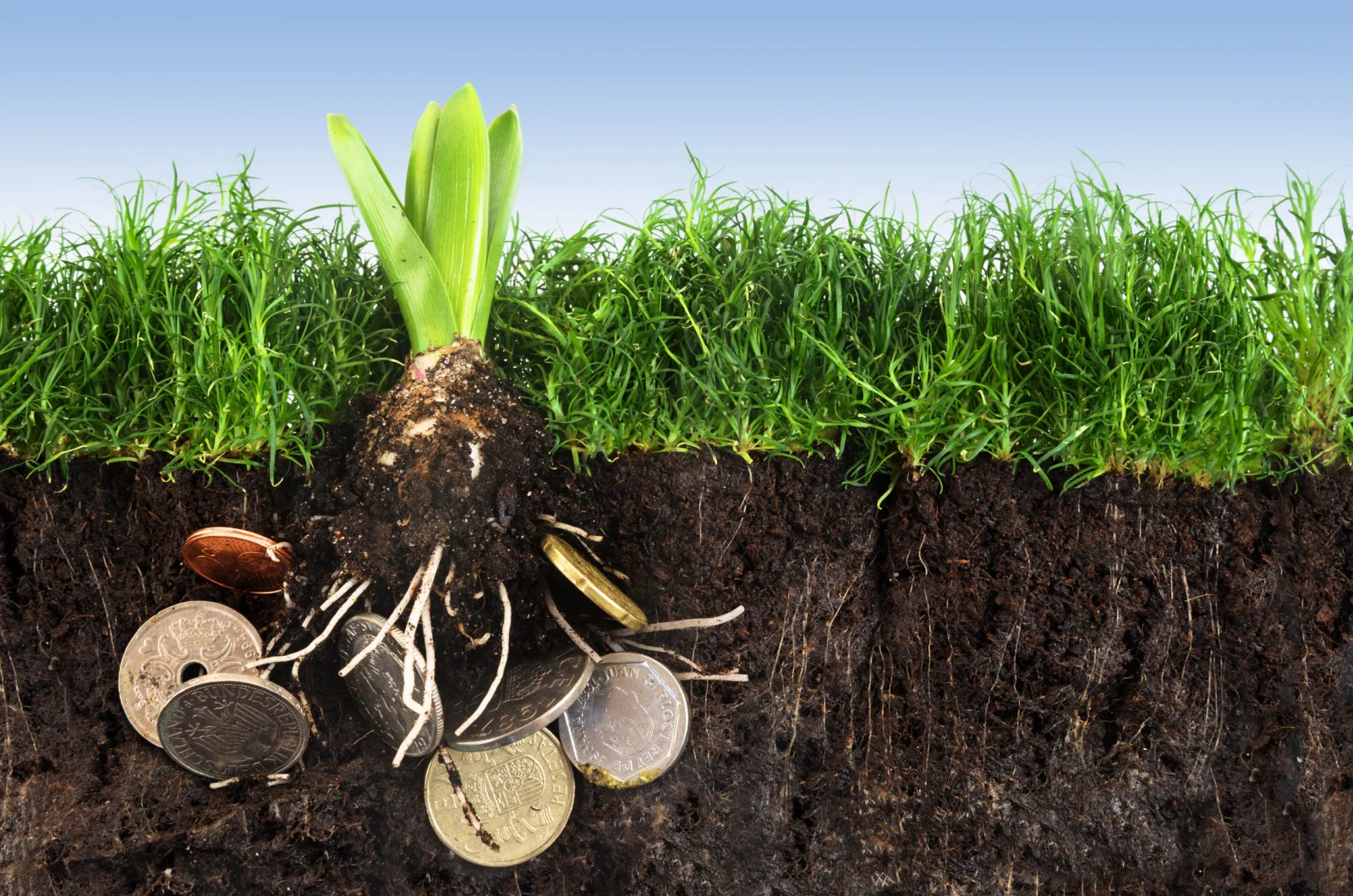If you’re struggling to maintain a healthy and vibrant lawn remember that you’re not alone. I’m sure you followed all the steps in lawn care but if that didn’t work out, you should try more unconventional methods.
Believe it or not, burying pennies in your lawn is an ingenious hack that takes lawn care to another level. Pennies contain an essential nutrient that can help your plants thrive.
Let’s find out everything!
Revealing The Penny Hack
So, what’s the story behind pennies and why on earth should we bury them in our lawns? As mentioned, they contain a nutrient and its name is copper.
Plants need this nutrient for healthy development but that’s not the only benefit (1). If you have problems with slugs, copper can help you fix them.
This element has antifungal and antimicrobial properties and can help the soil fight harmful bacteria.
All plants use copper in the photosynthesis process and it can support respiration, enhance enzyme function, and aid in building cell walls.
The biggest issue is that this element, that’s already in the soil, isn’t bioavailable to plants so you should supplement it to help your plants flourish.
Bonus hack: You can add pennies to a vase with cut flowers to keep them fresh longer!
Signs The Soil Needs More Copper
Ensuring enough nutrients leads to thick and green lawns. If your soil lacks copper, you may notice stunted growth and twisting of the blades and damaged juvenile grass.
A high population of slugs indicates fungal growth in lawns and copper will keep them at bay.
But before you bury pennies or add copper in any other way, you should always test the soil. Just like a lack of copper leads to issues, too much of it also has a bad effect on the lawn.
If the test shows a copper deficiency, your piggy bank hides the solution!
Adding Copper To Your Lawn
Randomly select a few locations in your yard and bury a couple of pennies at a depth of at least half an inch. It’s easier to bury them when the soil is soft, so you should wait for rain and employ the technique the day after.
You can also test a specific area in your yard. For example, if you’re growing tomatoes, bury pennies somewhere nearby and see how it goes.
Gardeners who are dealing with fungal or moss growth, you can go with another method. Simply take a small rock or a ball and glue your pennies. Leave it in a selected spot in your yard for a couple of weeks and check the results.
You can move the ball and treat all spots where grass doesn’t develop as it should. The same applies to using copper as pest control.
If the soil test shows severe copper deficiency, adding pennies won’t be enough to fix the issue. A copper sulfate additive is the better solution in this case.
Well, the next time you rob your piggy bank, you might want to share some pennies with your lawn!
References
1. Copper for crop production. (n.d.). UMN Extension.



